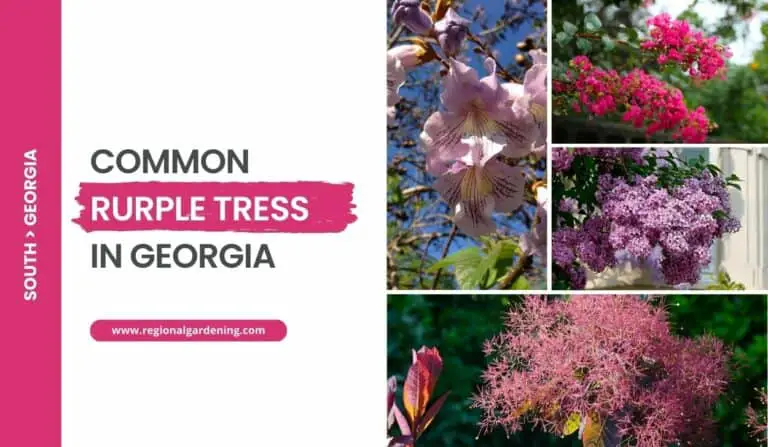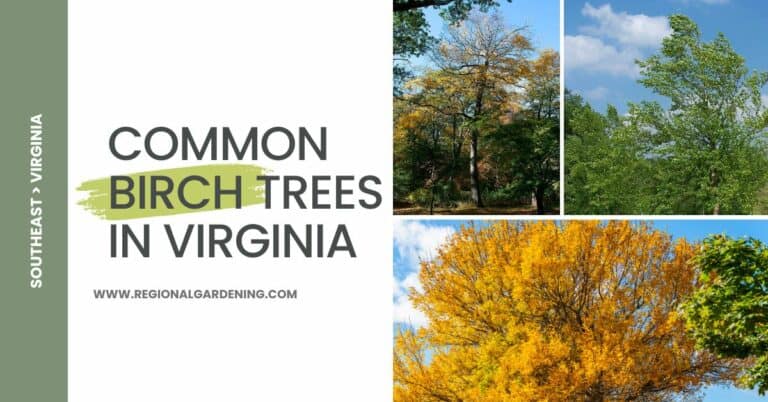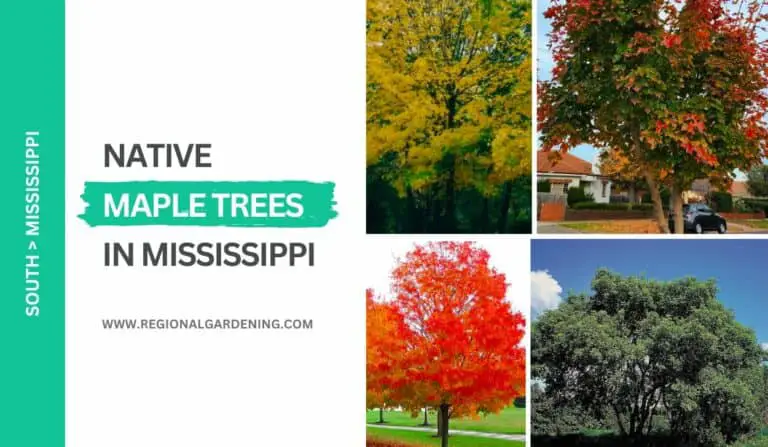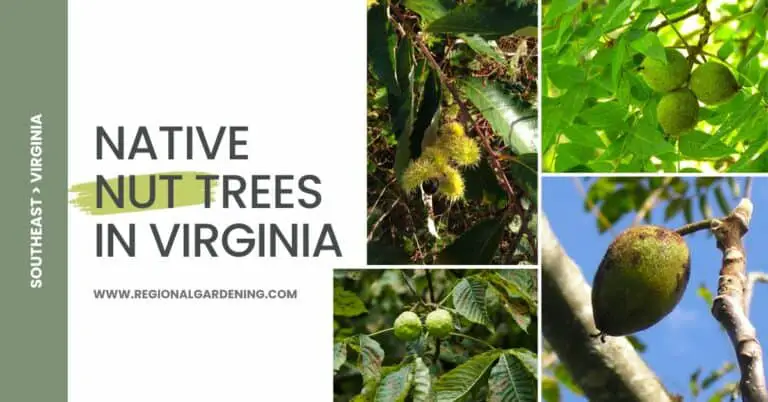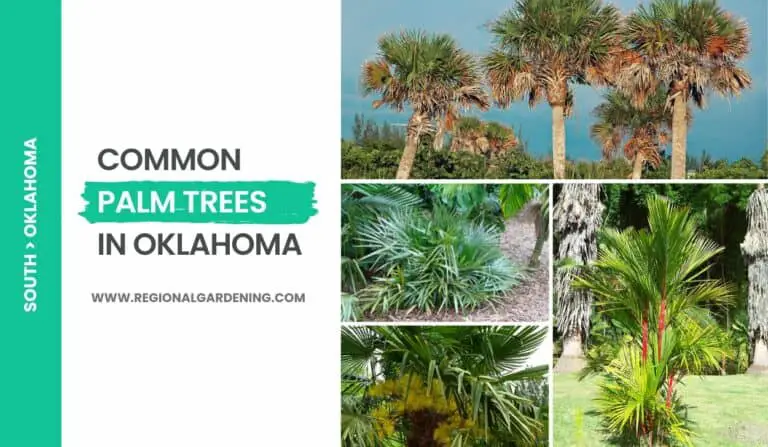10 Native Pine Trees In Georgia (Pictures & Identification)
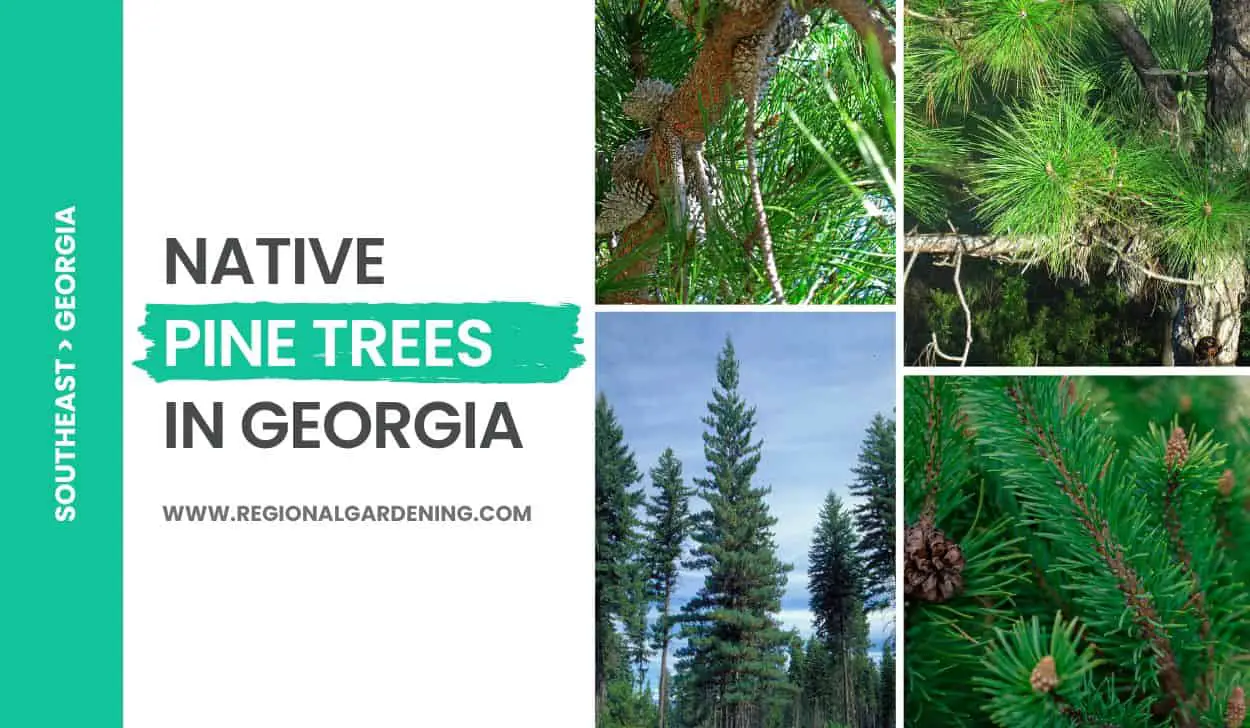
Pine trees are a well-known part of Georgia’s landscape. They are beautiful, provide shade, and do important things for the environment. And, with over a dozen species of native pine trees in the state, it can be challenging to identify each one.
In this article, we’ll talk about 10 of Georgia’s most common native pine trees and show you pictures and tips on how to tell them apart. We hope this will help you learn more about and appreciate these beautiful trees.
Let’s take a closer look at these natural beauties, from the stately Eastern White pine to the bushy Virginia pine, and learn more about their distinct characteristics.
1. Eastern White Pine
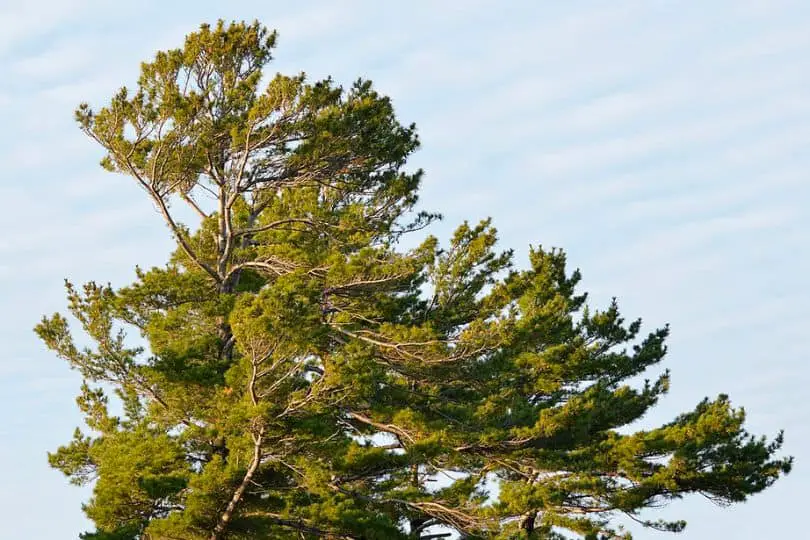
Eastern White Pines, are evergreen trees that can reach heights of up to 80 feet and have straight trunks that are 2 to 3 feet in diameter.
The underside of its leaves or needles is white, while the top is a bluish-green. They tend to expand in groups of five within a sheath.
The tree produces cone-shaped fruit, which can range in size from 4 to 8 inches, and it has flat, sticky scales. The tiny seeds with wings inside the cones are ready to germinate the following September.
While the plant is young, the stem and branches have smooth, greenish bark. The bark on an old tree trunk can grow to be up to two inches thick and will eventually peel off in broad, flat ridges that are coated in grayish-brown scales. The tree’s branches are arranged in orderly whorls and rise gradually.
Eastern White Pine timber is white, soft, straight-grained, and has a pale brown to light reddish brown tint. Several commonplace items, from houses to clocks to cabinets to matches are made with it. As a bonus usage, the tree is beautiful and provides welcome shade.
The Eastern White Pine is widespread in the mountains of the northern United States, and it thrives in shady, wet areas.
2. Virginia Pine
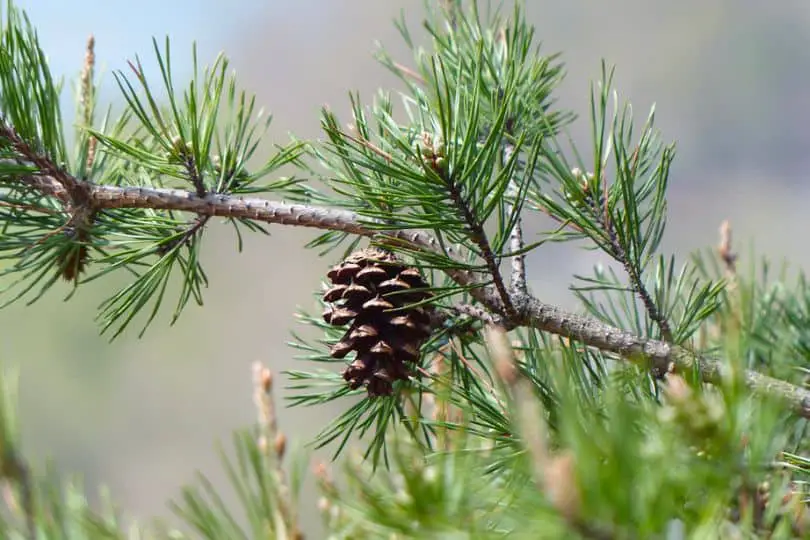
The Virginia Pine, or Pinus virginiana Mill., rarely grows taller than 30 to 40 feet and has a trunk diameter of more than 18 inches.
Virginia Pine needles, often known as leaves, are 1 1/2 to 3 inches in length, have a gray-green tint, and always come in pairs within the sheath. The fruit, or cone, of this species, measures 1.5 to 2.5 inches in length, is slightly slender, slightly curved, dark red-brown, and slightly glossy, and is covered in flat scales that are armed with small, often stout prickles.
Virginia Pines have reddish-brown bark that is scaly but practically smooth on young branches and the upper trunk and moderately roughened on older trunks. Rather than clustered together, the branches of this species appear in a pyramidal pattern.
Virginia pine has wood that is coarse-grained, knotty, and reasonably durable. The sapwood is virtually white while the heartwood is a pale orange tint. Pulp is made almost exclusively from this species since it is weaker than loblolly and shortleaf. From time to time, it is also processed into timber, which is graded independently from other southern yellow pines.
The southernmost occurrences of the Virginia Pine are in Clarke and Columbia Counties, where mountainous terrain meets the piedmont. Its needles and leaves are shorter than those of any other native pine, and its dead branches can hang around for years.
3. Loblolly Pine
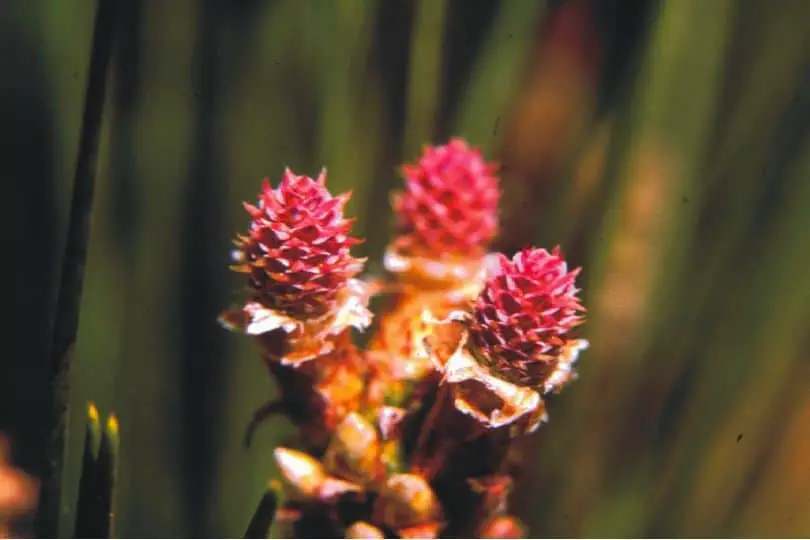
Lobolly Pine, or Pinus taeda L., is a tall tree that may grow up to 100 feet in height and has a trunk diameter of 2 to 5 feet. This species of southern pine, which can grow as quickly as 9 inches tall, is simple to identify by the length and slight twist of its pale blue-green needles or leaves. The needles always appear in threes and are gathered at the tips of the branches.
Cones, which can be anywhere from 2 to 6 inches in length, are the Lobolly Pine’s fruit. When fully developed, the cones have a pale reddish brown color with scales that are covered in small, thick prickles. Older trees have bright red-brown bark that is separated into broad, flat ridges, whereas younger trees have black bark with deep furrows.
The heartwood of a Loblolly Pine is a pale brown, while the sapwood ranges in color from orange to white.
Lumber merchants sell it as southern yellow pine, a term that encompasses a blend of this species and others native to the South, such as slash, longleaf, and shortleaf pine. Construction, interior/exterior finishing, and pulp production are just a few of the many applications for this species.
The Lobolly Pine can be found almost everywhere in the state except for the highest mountains. In contrast to the piedmont, where it is abundant, it is more scarce on the coastal plain. The southern yellow pine is the most widely cultivated pine species in the world.
4. Longleaf Pine
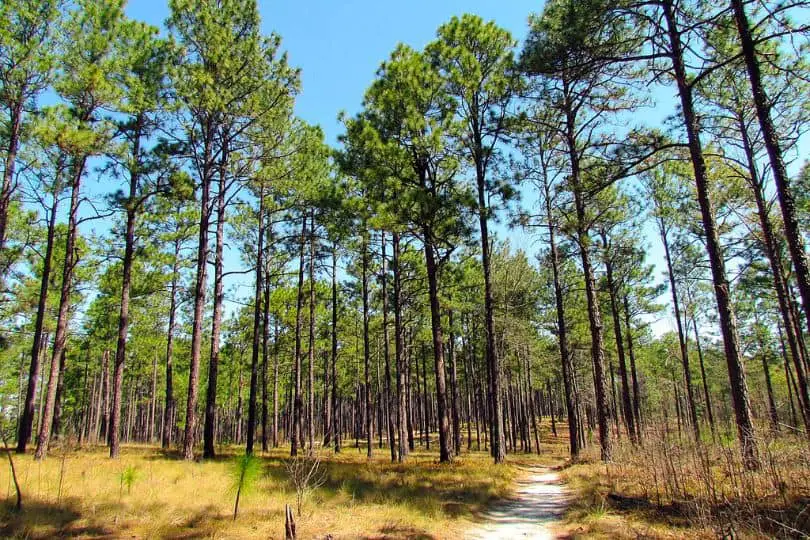
The Longleaf Pine is a type of tree characterized by its long, dark green needles, which grow in clusters of three.
The adult cones, which are between 6 and 10 inches long, drop from the tree after two years but leave behind a few basal scales. The bark peels off in big, papery scales and has a pale orange hue.
The Longleaf Pine is a sturdy and durable tree that may survive for hundreds of years and reach heights of 100 feet. Its trunk is straight and slightly tapered and is 2 to 3 feet in circumference. Its enormous, white terminal buds are a show-stopper in the spring.
The wood of the Longleaf Pine, which is coarse-grained and a pale reddish yellow, is notoriously dense, hard, and robust. Likewise, the heartwood is tough. The southern yellow pine is the most durable of the species and is used extensively in the building industry for anything from railroad ties and poles to boats and pulp. The gum naval stores are made from one of just two types of trees.
Although the Longleaf Pine is most common along the coast, it also grows inland along the state’s western boundary, all the way to the area around Rome. It prefers wide areas with sandy, dry soil and can thrive under conditions that would kill other southern yellow pines.
5. Shortleaf Pine
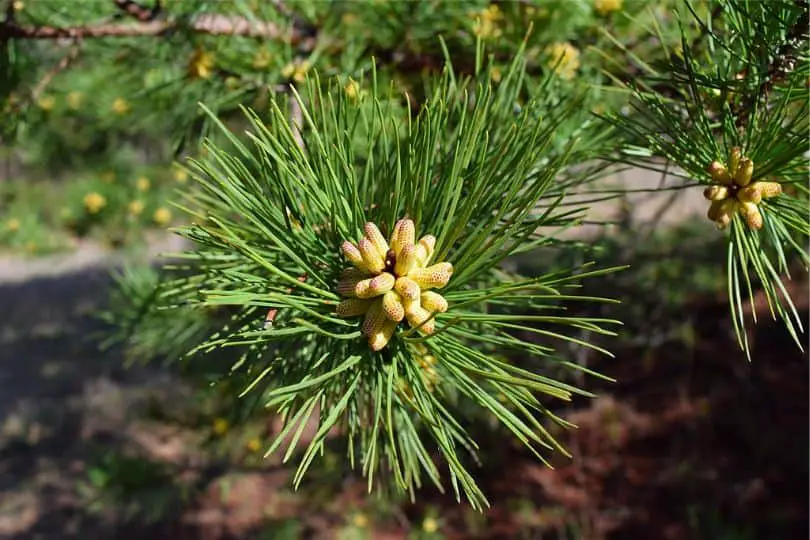
The Shortleaf Pine, commonly known as Pinus echinata Mill., is a tall tree with a trunk diameter of 3 to 4 feet and a height of 80 to 100 feet. At the top of the stem, this species develops a short, pyramidal head of slender branches. The leaves or needles of the Shortleaf Pine are dark yellow-green and 3 to 5 inches long, with 2 to 3 clusters per sheath.
The Shortleaf Pine fruit or cone is 1 1/2 to 2 1/2 inches long, becoming dull brown at maturity, and equipped with small, sometimes deciduous, prickles. This species’ bark is split into uneven plates covered in small, light cinnamon-red scales.
Shortleaf Pine wood is varied, hefty, hard, and robust, with a coarse-grained texture. The sapwood is cream-colored, while the heartwood is orange. This species has a wide range of applications, including building, interior finishing, and pulp manufacture.
With the exception of a few isolated locations in the coastal plain, the Shortleaf Pine can be found across the state. It is possibly more prevalent in the upper piedmont on heavy clay soils.
6. Spruce Pine
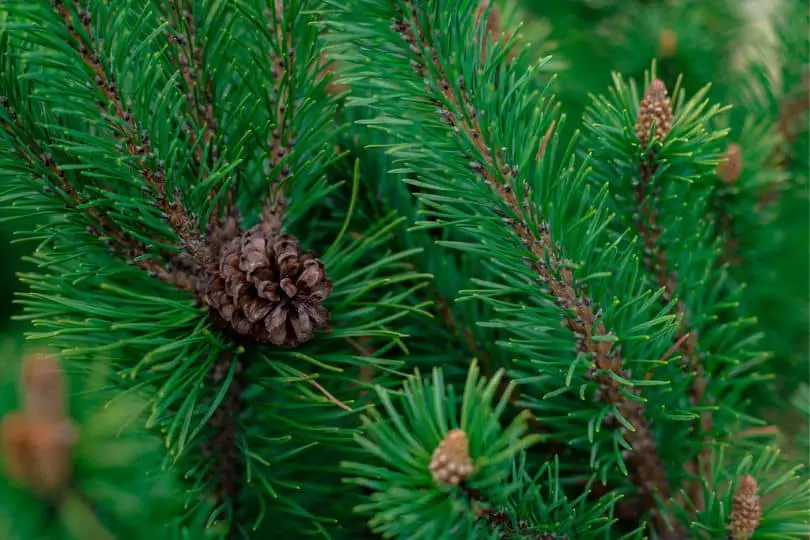
Pinus glabra Walt, or the Spruce Pine, can reach heights of 80 to 100 feet. It has a 2–3 foot diameter trunk and an open, narrow crown made up of small horizontal branches.
The needle-like leaves have a dark green color and can be up to 3 inches in length. They are pliable, delicate, and always found in pairs within the sheath. The mature fruit or cone is reddish brown and slightly glossy and is only about half an inch to two inches long, like an egg. The cone’s scales are razor-sharp.
The Spruce Pine is only found on the coastal plain, and even then, it is typically found in moist, sandy soils near streams. As a result, the pure stands of this tree are unusual; instead, you’ll typically find them mixed in with swamp hardwoods.
Young trees and their upper trunks have smooth, silvery bark, whereas older trunks have slightly separated flat ridges and a considerably darker appearance.
The Spruce Pine differs from other pines in that its bark is unusually smooth, like that of many hardwood trees. Despite its similarity to the White Pine, the Spruce Pine is not related to any of these trees. It has the smallest cones of any natural pine.
Spruce Pine wood is extremely light, pliable, and fragile, but it has a very noticeable and noticeable coarse grain. The process of sawing it into lumber might cause it to warp because of its lack of strength.
The sapwood is white and the heartwood is a pale brown. In addition to its primary usage as a pulp source, the tree is also grade-marked distinctively from other southern yellow pines when it is processed into lumber.
7. Slash Pine
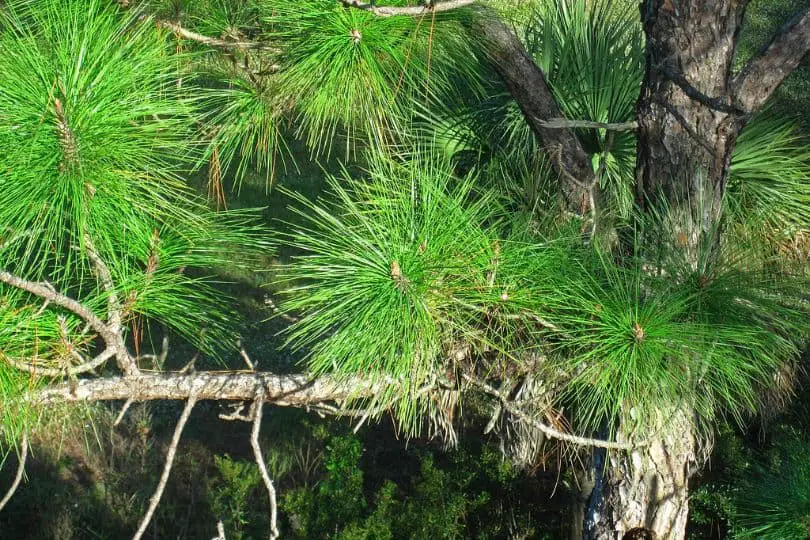
The Slash Pine, also known as Pinus elliottii Engelm., has dark green, thickly-set leaves or needles that grow in clusters of 2 or 3 to the sheath and are 8 to 12 inches long.
Its fruit, a cone 3–6 inches long, is dark and shiny, and its scales are covered with small prickles. Young trees have hard, dark reddish-brown bark, while older trees’ bark is orange and cracked into broad, flat scales. It can reach heights of 80–100 feet and has a spherical crown atop a tall, tapering stem that averages 2–3 feet in diameter.
The heartwood of the Slash Pine is a rich dark orange hue, while the sapwood is a light yellowish-white tone. The heartwood is heavy, hard, strong, and coarse-grained. Railroad ties, general construction, poles and piling, boats, railroad carriages, and pulp are just some of the many uses for this versatile tree. Gum turpentine and rosin are extracted from this plant, along with others.
The Slash Pine is a tree that prefers low, damp, sandy settings and has a limited distribution that centers on the lower coastal plain. Its distribution, however, includes areas with drier ridges, where it can also thrive. The tree is a staple in plantations.
8. Pond Pine
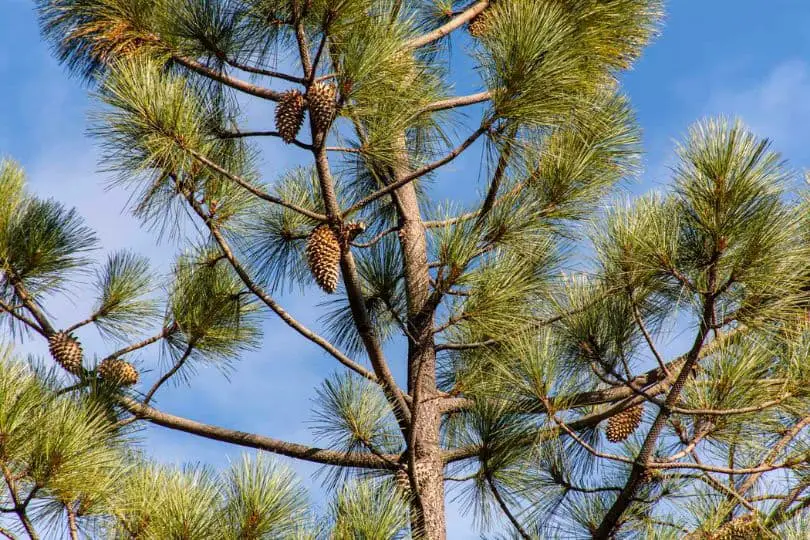
The Pond Pine tree can reach heights of 40 to 70 feet and has a diameter of no more than 2 feet. A small trunk leads to an open round-topped head with generally twisted branches and slender branchlets. Pond Pine needles are 6 to 8 inches long and dark yellow-green, appearing in bundles of three or four to a sheath.
When grown, the tree produces egg-shaped fruit or cones that are light yellow-brown. The cones are 2 to 2 1/2 inches long, with scales armed with minute, deciduous prickles. The Pond Pine’s bark is dark red-brown and separated into little plates that separate into thin scales on the surface.
The Pond Pine’s distinguishing features include its glossy egg-shaped cone, which becomes slightly disk-shaped when open, and its needles, which typically grow in mats along the main branches and trunk. Pond Pine wood is resinous, heavy, squishy, brittle, and coarse-grained. The sapwood is pale yellow in hue, while the heartwood is dark orange.
The Pond Pine is mostly utilized for pulp and, on occasion, lumber, which is graded differently than other southern yellow pines. The tree is restricted to the coastal plain’s “ponds” and poorly drained swamp habitats.
9. Table Mountain Pine

The Table Mountain Pine, or Pinus pungens Lambert, is a tree that can reach heights of 30–40 feet but has a trunk only 1.5–2 feet in diameter at its base. Typically, the tree’s crown will have a flat top and an irregular outline. It has thick, twisted needles or leaves that range in length from 1 1/2 to 3 inches and have a dark blue-green tint. The needles usually come in pairs, but occasionally you’ll find three to a sheath.
The Table Mountain Pine bears fruit in the form of an egg-shaped cone that is between 2.5 and 3 inches in length and is frequently uneven at its base. At maturity, the cones turn a glossy light brown and can hang on the tree unopened for years. Among the most distinguishing features of this tree is the presence of thick, hooked spines on the cone scales.
The Table Mountain Pine has dark brown, flaky scales on its juvenile branches and upper trunk. The bark on ancient trees has peeled off in irregular plates and is now covered in scaly, dark brown, and somewhat reddish-brown growths.
The Table Mountain Pine tree yields wood that is weak, lightweight, coarse-grained, and pliable. It has a pale brown heartwood and thick white sapwood. Rough lumber is a common use for the tree, hence it is occasionally cut down.
Typically, you may find the Table Mountain Pine up in the mountains, where it grows in small groups on dry slopes and ridges. The distinctive characteristics of this tree include its short, thick trunks and its horizontal branches that often reach the ground.
The tree is easily recognizable by its oddly shaped cones, which are covered in shiny scales and armed with thick, hooked spines. Because of these things, the Table Mountain Pine is a very important part of any mountainous area.
10. Pitch Pine
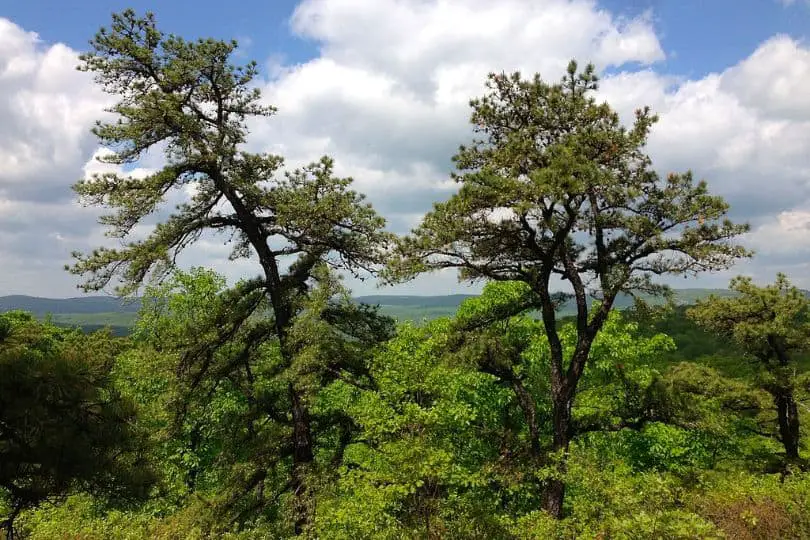
The Pitch Pine, scientifically known as Pinus rigida Mill., is a tall tree that can reach heights of 50 to 60 feet, and in exceptional instances, 100 feet. The tree has a short trunk, which can sometimes reach a diameter of 3 feet, and a thick, round-topped head that is frequently uneven and characterized by distorted branches.
The needles or leaves of the Pitch Pine range in length from 3 to 5 inches and have a dark yellow-green tint. They are twisted and stand rigidly perpendicular to the branch in clusters of three on the sheath. The mature fruit or cones of this tree are between 1 to 3 1/2 inches in length and are light brown. The cone’s scales are equipped with stiff barbs.
The bark of young trees is shattered into dark red-brown scales. As the tree ages, however, the bark develops broad, flat, brownish-yellow ridges. The wood of the Pitch Pine is light, soft, weak, brittle, coarse-grained, and long-lasting. The heartwood is thick and light brown or red in hue, while the sapwood is yellow or white.
Although the Pitch Pine does not yield high-quality lumber, it is occasionally used for railroad ties, mine props, charcoal, and fuel. The tree is typically found on arid ridges and slopes in the mountains of the northeastern portion of the state. However, it is also found in damp, fertile coves.
The Pitch Pine is distinguished by its leaves or needles standing rigidly at right angles to the branch and occurring in clusters of three per sheath, and by its bark, which is initially dark and highly scaly and eventually divides into broad, flat, yellowish-brown ridges.
Native Pine Trees In Georgia – Frequently Asked Questions (FAQs)
I’ll go over some of the most frequently asked questions about native pine trees in Georgia, which are taken from gardening forums and other discussion channels.
Do pine trees grow in Georgia?
Georgia and other southern states are excellent places for pine tree growth. The state has over ten native pine species, including Eastern White Pine, Loblolly Pine, Longleaf Pine, Shortleaf Pine, Spruce Pine, Pond Pine, etc.
How to identify pine trees in Georgia?
Identifying pine trees in Georgia can be done using a few key characteristics. First, pine trees usually have needles that grow in bundles or clusters, with each bundle containing anywhere from 2 to 5 needles depending on the species. Second, pine cones are a common feature of pine trees and can vary in size and shape depending on the species. Third, pine bark is usually scaly or rough and can also vary in color depending on the species, ranging from a light gray to a dark brown.
What kind of pine trees grow in North Georgia?
In North Georgia, you can find many native pine species, such as the Eastern White Pine, Virginia Pine, Loblolly Pine, and Shortleaf Pine.
Similar Articles
- Native Oak Trees in Georgia
- Native Hickory Trees In Georgia
- Native Dogwood Trees In Georgia
- Native Tupelo Trees In Georgia
- Native Maple trees In Georgia
- Native Willow Trees In Georgia
- Native Plum Trees In Georgia
- Native Magnolia Trees In Georgia
- Native Ash Trees In Georgia
- Native Elm Trees In Georgia
- Native Cottonwood Trees In Georgia
- Native Cedar Trees In Georgia
- Native Birch Trees In Georgia
- Common Purple Trees In Georgia
- Common Cypress Trees In Georgia
- Common Palm Trees In Georgia
- Common White Flowering Trees In Georgia
Sources
The Regional Gardening team makes sure that the information in our articles is accurate by only using sources that are known to be trustworthy. Some of these sources are peer-reviewed journals from government agencies, well-known universities, and scientific research organizations.
- Georgia Native Plant Society
- College Of Agricultural & Environmental Sciences, University Of Georgia
- Native Plants Books, Georgia Native Plant Society
- Georgia Forestry Commission
- Native Plants Of North Georgia, University Of Georgia


